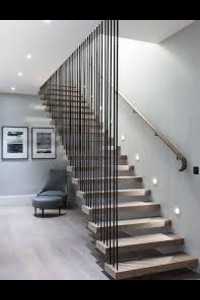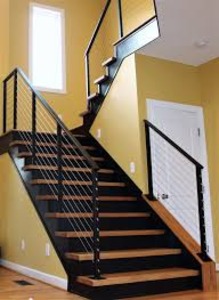When it comes to combining form and function in design, few features are more dramatic and space-conserving than spiral stairs. Used indoors or out, spiral staircases design offer a unique solution for vertical egress that is as functional as it is beautiful. Their compact footprint, flowing curves, and ability to complement a range of design styles have made them a favorite among homeowners, architects, and builders.
In this blog, we’ll explore what makes spiral stairs so appealing, the design options available, and how to incorporate materials like prefinished stair treads for a sleek and durable finish.
Why Choose Spiral Stairs?
Spiral staircases have been in existence for centuries, and they were previously being built in castles, towers, and other small architectural buildings. These days, however, not only are they being admired because of their nostalgic factor, but also because of their current-day versatility. Some of the most well-known reasons people opt for spiral stairs include the following:
- Space-Saving Design
One of the biggest advantages of a spiral staircase is that it occupies a very minimal footprint. Unlike L-shaped or straight stairs, spiral stairs curve around a central pole, allowing you to save precious square footage. As is, they’re ideal for small houses, lofts, apartments, or areas with minimal floor space. - Aesthetics
A spiral staircase can be a wonderful showstopper in a room. Wrought wood for a rustic feel, industrial metal for a metallic feel, or modern glass and steel design- the possibilities are limitless. Spiral stairs provide depth and elegance to any interior or exterior space because of their curving design that leads one’s eye upwards along the stairs. - Flexibility in Positioning
Spiral staircases can be located almost anywhere—in the center of the living space, across a rooftop patio, or even outdoors linking different levels of a deck. They even exist in clockwise and counterclockwise directions to accommodate your room layout.
Customization and Materials
Spiral staircases are extremely flexible when it comes to material and finishes. Some of the materials used are:
Steel – Sleek and strong, often used in modern or industrial-style homes.
Wood – Warm and traditional, ideal for traditional or country homes.
Glass – Ideal for modern interior spaces that need to be airy and light.
Aluminum – Rust-proof and light, ideal for outdoor applications.
The balusters, handrails, and treads can all be tailored to your space’s style theme. And when it comes to treads, the right finish option isn’t just a matter of appearance but also durability and maintenance.
Adding Professionalism to Your Design with Prefinished Stair Treads
One of the most important, and most frequently neglected, design aspects of spiral staircase design is the selection of stair treads. Wood or metal that is unfinished can be stunning, but they generally need to be sanded, stained, sealed, or painted—time- and budget-absorbing steps that take away from your project.
Prefinished stair treads take that problem away.
These treads are factory-finished and ready for installation. They come pre-coated with stain or paint and a durable top layer that resists wear and tear. Here are some of the benefits of using prefinished stair treads in your spiral staircase:
Time-Saving: No need for on-site finishing. Simply install and go.
Consistency: Uniform finish across all treads for a polished look.
Durability: Resistant to scratches, scuffs, and moisture.
Low Maintenance: Simpler to clean and maintain over the long term.
Prefinished treads are available in a huge range of colors and wood types, from classic oak and maple to exotic walnut and bamboo. You can even get them in a reclaimed or distressed wood appearance for a more rustic look.
Design Tips for Spiral Staircases
Should you be thinking of adding a spiral staircase to your commercial or residential project, here are some tips:
Match Materials to Surrounding Space: For continuity, select tread and railing materials that complement your flooring, furniture, or architectural elements.
Add Lighting: LED strip lighting can be placed under each tread or an overhead pendant light for safety and to highlight the curves of the staircase.
Bring your design into code compliance with local building codes for tread width, riser height, and handrail placement.
Consider Flow: Spiral staircases are space savers but less comfortable to use. Consider the needs of your household or building users in selecting tread width and pitch.
Final Thoughts
Spiral staircases are not only a space saver, but they are a focal point that brings personality and character to a room. From a modern metal spiral in an urban loft to a wood spiral in a mountain retreat, the possibilities are limitless.
With items such as prefinished stair treads, not only are you bringing beauty to your staircase, but long-lasting performance with minimal maintenance. Whether building a new house, remodeling a home, or simply needing to refinish a tight corner, a properly designed spiral staircase can turn your room from the ordinary to the spectacular.




